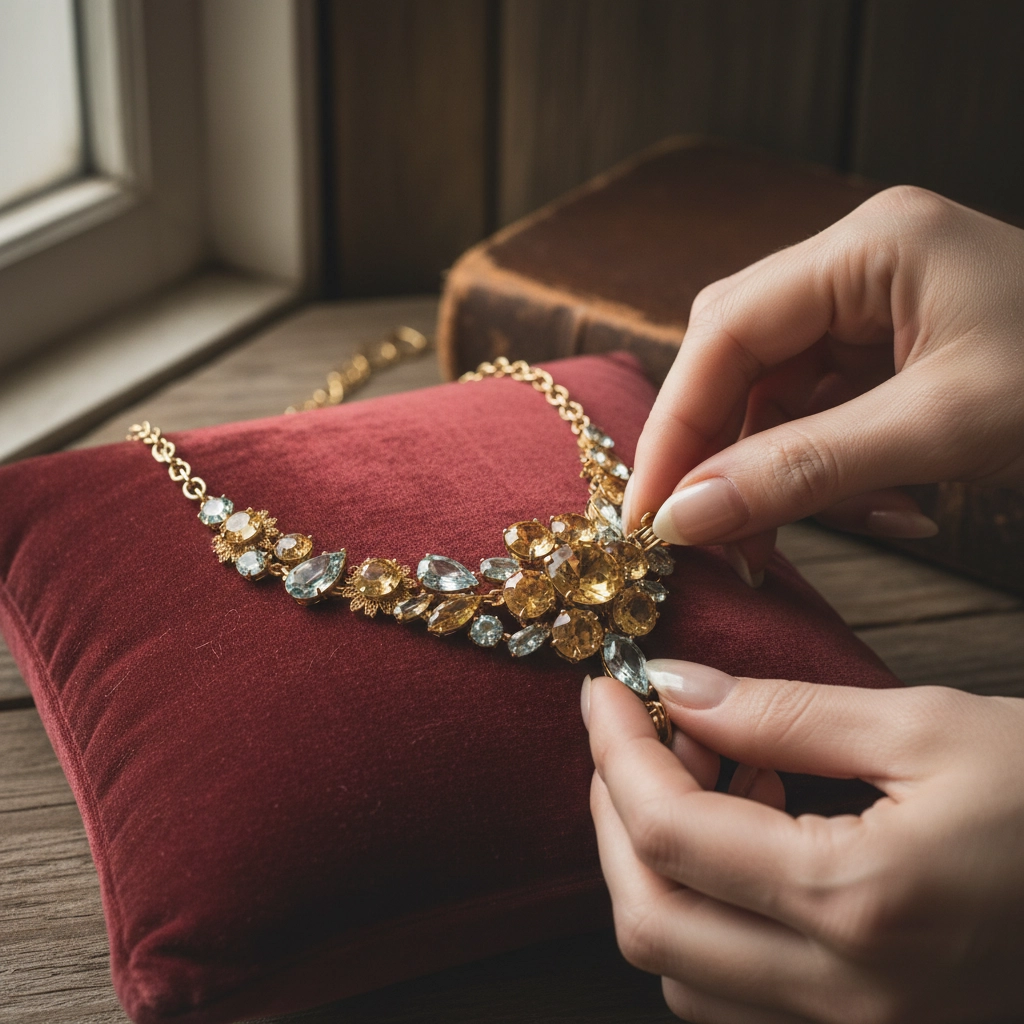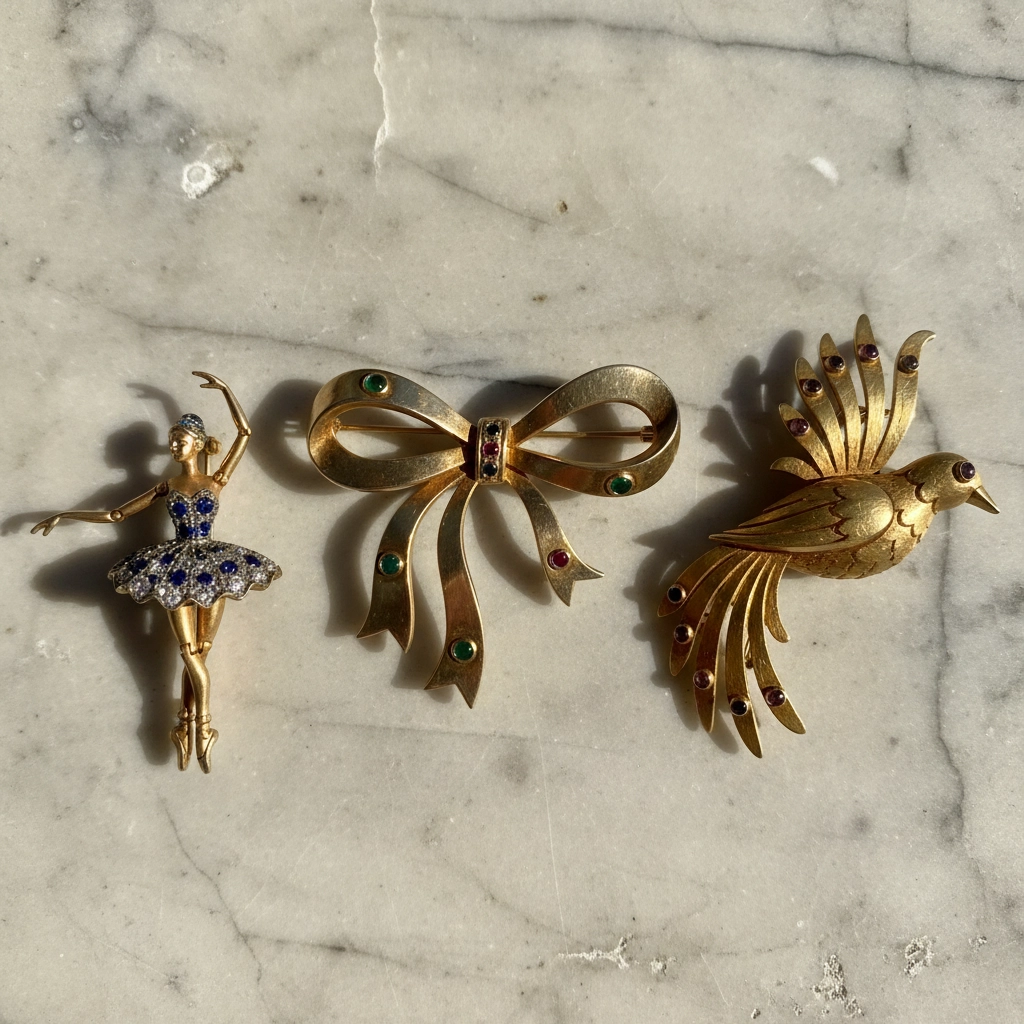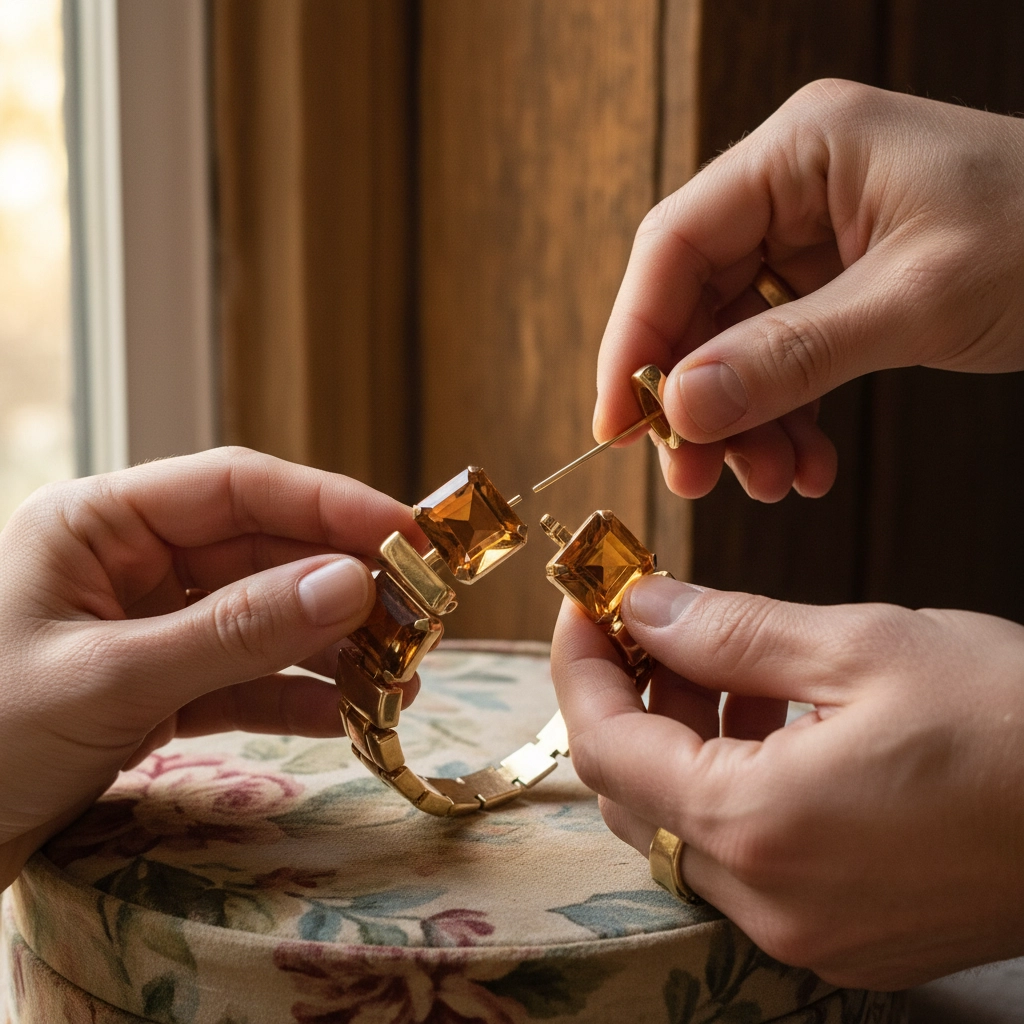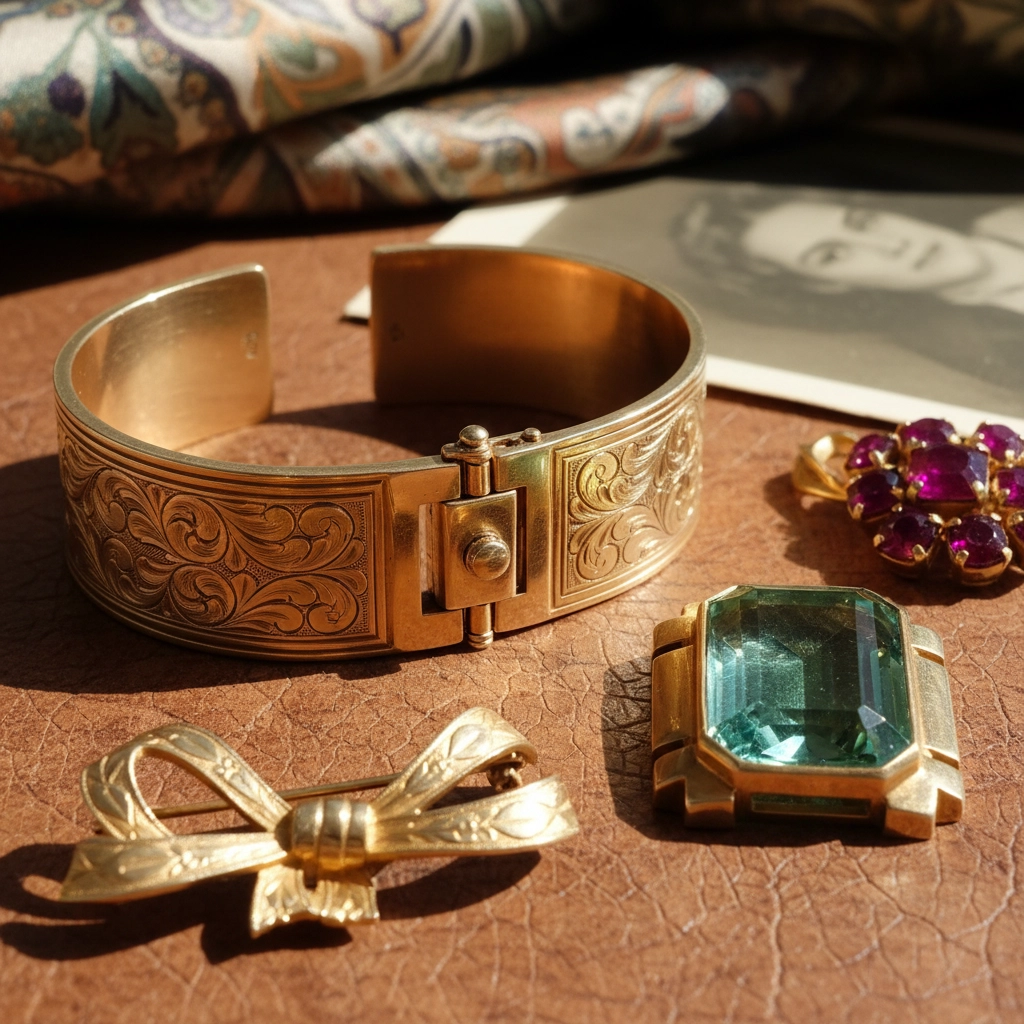Retro Jewelry Part 3: Iconic Brooches and Convertible Pieces
Retro Jewelry Part 3:
Iconic Brooches and Convertible Pieces
Part 3 of 4
Welcome back to our retro jewelry journey! If you've been following along, we've covered those bold cocktail rings and the glamorous Hollywood starlets who made them famous. Now, I want to talk about what might be the most ingenious jewelry innovation of the 1940s: convertible pieces and those show-stopping brooches that could literally transform your entire look in seconds.
Think about your jewelry box for a moment. How many pieces do you actually wear regularly versus how many just sit there looking pretty? Well, the women of the 1940s didn't have that luxury: and honestly, they came up with solutions that put our modern jewelry game to shame.
When Practicality Met Glamour
The 1940s were tough times. We're talking World War II, rationing, and women entering the workforce in unprecedented numbers. But here's what I find absolutely fascinating: instead of abandoning jewelry altogether, designers got creative in ways that still blow my mind today.
Enter convertible jewelry: pieces that could transform from a necklace into a brooch and matching earrings, or a bracelet that became a hair ornament. These weren't just clever tricks; they were survival strategies wrapped in gold and gemstones.
I've handled thousands of vintage pieces over the years, and let me tell you, when you hold a genuine 1940s convertible piece, you can feel the thoughtfulness in every hinge and clasp. These designers were solving real problems for real women who needed to look professional at work, elegant at dinner, and glamorous for those rare nights out: all with a limited jewelry budget.

The Brooch Revolution
Now, let's talk brooches. I know what you're thinking: "Peter, brooches are what my grandmother wore." But hear me out. The brooches of the 1940s were nothing like those delicate Victorian flowers your great-aunt pinned to her cardigan.
These were statement pieces with serious attitude. Picture this: oversized bows that looked like they were carved from flowing silk, but made entirely of gold. Animals with articulated parts that actually moved: I once had a Van Cleef & Arpels ballerina brooch where the dancer's arms and legs were jointed. When the woman wearing it walked, the ballerina literally danced on her lapel.
The designers of this era understood something we've forgotten: jewelry should have personality. They created pieces that told stories, made people smile, and started conversations. Have you ever worn something that made strangers stop and ask about it? That's the kind of impact these brooches had.
The Art of Transformation
Here's where it gets really interesting. Many of these brooches weren't just brooches: they were the centerpiece of elaborate convertible systems. Picture a necklace with a stunning floral cluster at the center. Unclip that cluster, add a pin back, and suddenly you have a brooch. The remaining chain? That becomes a delicate bracelet or a choker.
I remember one client brought in her grandmother's 1940s suite that converted in six different ways. We spent an hour in the shop just figuring out all the combinations. The ingenuity was incredible: hidden clasps, reversible elements, modular components that could be mixed and matched.

The materials they used were equally impressive. While wartime restrictions limited platinum and certain metals, designers embraced large-scale gold work and bold gemstones. Think substantial citrines, dramatic aquamarines, and rich amethysts: stones that were affordable but had serious visual impact.
Spotting the Real Deal
If you're thinking about adding some authentic 1940s convertible pieces to your collection, here's what to look for. First, the construction quality is usually exceptional. These pieces were built to be handled, converted, and worn regularly, so the mechanisms are robust and well-engineered.
Look for hand-engraved details, substantial gold weight, and those characteristic design motifs I mentioned: ribbons, bows, flowers with realistic details, and nature themes. The gemstone cuts tend to be substantial and geometric: lots of emerald cuts and bold step cuts rather than the smaller brilliant cuts popular in earlier decades.

Be wary of pieces where the conversion mechanisms seem flimsy or were clearly added later. Original convertible pieces were designed that way from the ground up, and it shows in every detail.
Modern Interpretations and Timeless Appeal
Here's what I find remarkable: these 1940s design principles are more relevant now than ever. In our age of conscious consumption and versatile wardrobes, the idea of jewelry that serves multiple functions is incredibly appealing.
Contemporary designers are absolutely taking notes. I've seen modern pieces that convert from chokers to bracelets, earrings that transform into pendants, and brooches that double as hair accessories. The technology is more advanced now, but the core concept remains brilliant.
And those bold, dimensional designs? They're everywhere in contemporary jewelry. The oversized bow brooches that Chanel keeps revisiting? Direct descendants of 1940s retro pieces. The nature-inspired brooches with moveable parts that high-end designers create today? They're channeling that same 1940s innovation and whimsy.

What I love most about these pieces is how they encourage creativity in the wearer. When you own a convertible piece, you're not just buying jewelry: you're buying possibilities. You're buying the ability to surprise people, to reinvent your look, to be resourceful and elegant at the same time.
Why This Era Still Matters
The 1940s taught us that limitations can spark incredible innovation. When designers couldn't rely on endless resources or unlimited budgets, they focused on intelligence, creativity, and genuine functionality. The result was jewelry that was both more practical and more imaginative than what came before or after.
Looking at your jewelry collection now, how many pieces truly multitask? How many make you smile every time you wear them? How many have that perfect balance of practicality and beauty that characterized the best of 1940s design?
These convertible brooches and modular pieces weren't just jewelry: they were tools for transformation, both literal and metaphorical. They gave women the power to adapt, to surprise, and to make the most of what they had. In a world where we're all trying to be more thoughtful about our purchases and more creative with our styling, maybe it's time we took another page from their book.
Tomorrow, in our final installment, we'll explore how the retro era's influence continues to shape jewelry design today and what lessons modern collectors can learn from these innovative decades. Trust me, you won't want to miss it.
What convertible piece would you design if you could create one today? I'd love to hear your ideas.
Cheers,
Peter